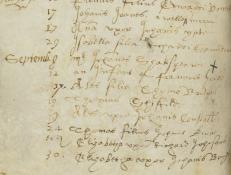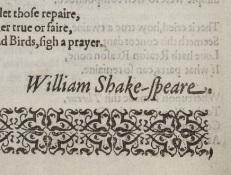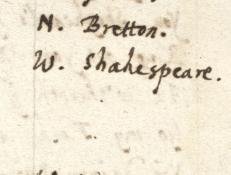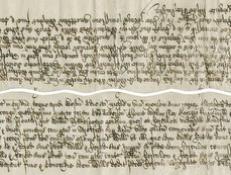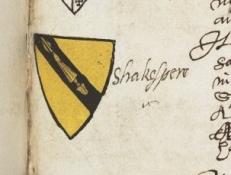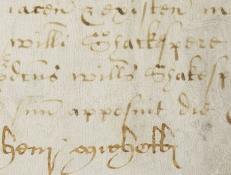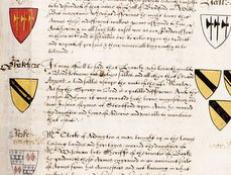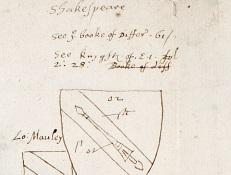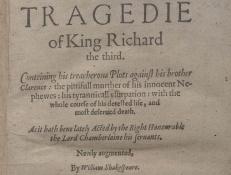To view a sortable list, please visit the Resource
All Documents
September 8, 1601
John Shakespeare was buried on September 8, 1601, according to the Holy Trinity Church parish register. Next to the entry, an “X” added by a later hand highlights its significance.
1601
Shakespeare’s poem, now known as “The Phoenix and the Turtle,” was appended to a collection of poetry called Loves Martyr printed in 1601.This volume mostly consists of Robert Chester’s long and obscure narrative poem about the love between the phoenix and a dove
1601
SHAKESPEARE DOCUMENTED IS STILL GROWING! Descriptive content and transcriptions will continue to be added, updated and expanded. Check back for regular updates!
1602
These two documents are the buyer's and vendor's copies of the 1602 final concord for Shakespeare's purchase of New Place. Shakespeare purchased New Place, one of the largest houses in Stratford-upon-Avon, from William Underhill in 1597.
April 19, 1602
Henry VI Part 1 and Part 2 and Titus Andronicus were entered into Liber C of the Stationers' Company on April 19, 1602.
1602
In 1602, Ralph Brooke, York Herald, contested 23 coats of arms granted by William Dethick, Garter King of Arms, including the arms originally granted to Shakespeare’s father, John Shakespeare, and now belonging to William Shakespeare.
September 28, 1602
Shortly after his purchase of land from the Combes, a major investment, Shakespeare acquired a cottage and a quarter acre of land in Chapel Lane, to be held by a form of tenure known as copyhold.
1602
In 1602, Ralph Brooke, York Herald, contested 23 coats of arms granted by William Dethick, Garter King of Arms, including the arms originally granted to Shakespeare’s father, John Shakespeare, and now belonging to William Shakespeare.
ca. 1602
In 1602, York herald Ralph Brooke challenged 23 coats of arms granted by William Dethick, including the arms originally granted to Shakespeare’s father, John Shakespeare, and now belonging to William Shakespeare.
1602
This is the third edition of Richard III, printed in 1602. It is the second of two editions printed by Thomas Creede for Andrew Wise. On June 25, 1603 Wise transferred the rights to the play to Matthew Law.

